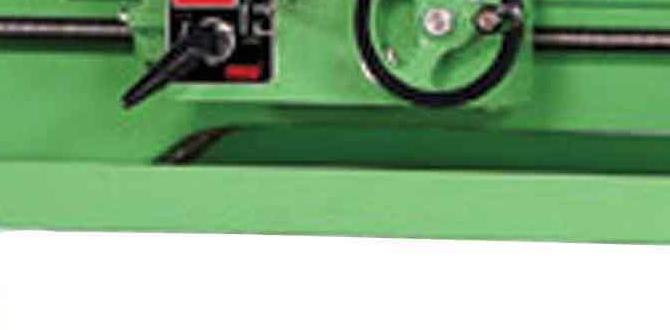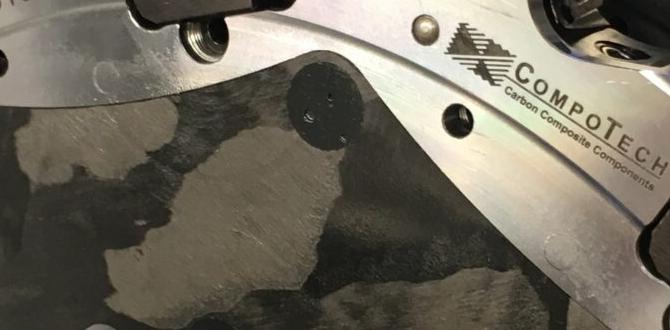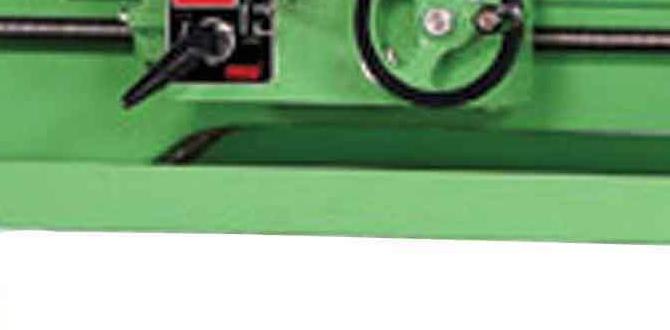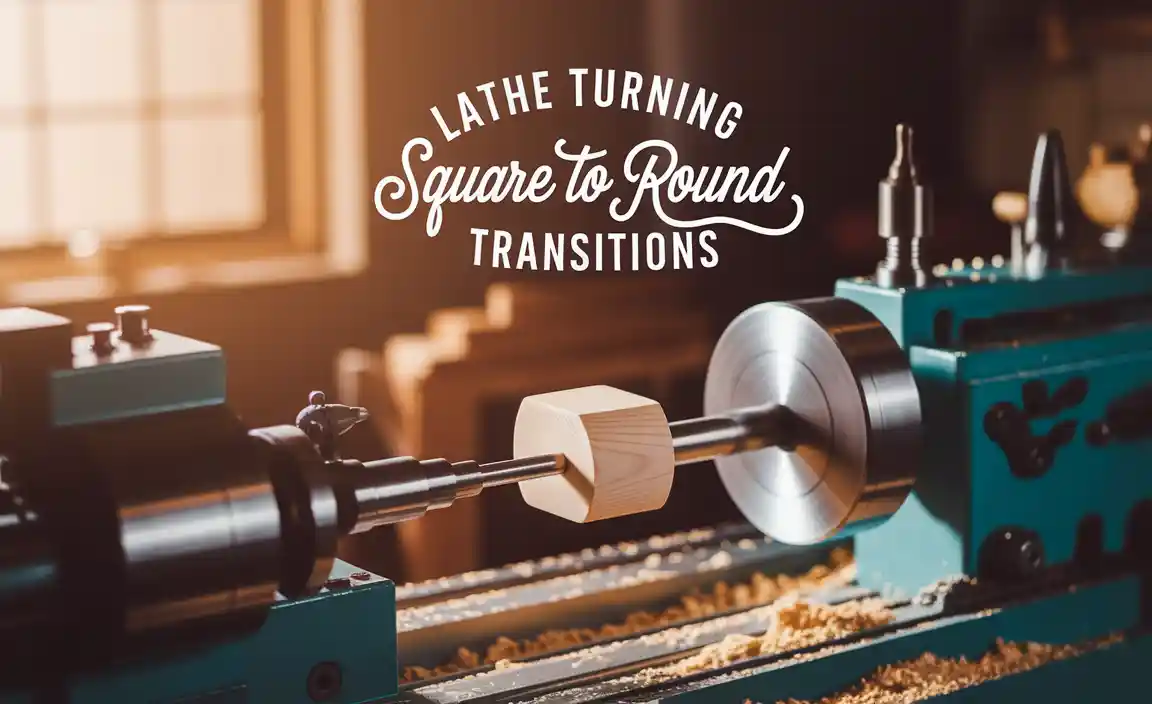Quick Summary: Get your essential lathe machine tools right! This guide breaks down the must-have set for beginners, covering everything from cutting to measuring, ensuring you start turning with confidence and accuracy.
Starting with a lathe machine opens up a world of creation, whether you’re shaping wood or metal. But faced with a bewildering array of accessories, choosing the right tools can feel overwhelming. It’s easy to get lost in technical terms and feel unsure about where to start. Don’t worry! We’ve all been there. This guide is designed to cut through the confusion, showing you the genius essential set of tools that every beginner needs. We’ll focus on practicality, reliability, and getting you turning safely and effectively. Let’s discover the core tools that will build your foundation.
Your Lathe Machine Tool Kit: Building Blocks for Success
Think of your tools as your hands on the lathe. Having the right ones makes all the difference between frustration and turning out fantastic projects. For beginners, the key is to start with a solid, versatile set rather than trying to own everything at once. This approach saves money and helps you learn the function of each tool thoroughly before expanding. We’ll focus on the absolute essentials that cover the main tasks you’ll encounter when starting out.
The Heart of the Matter: Turning Tool Bits
These are the workhorses that actually shape your material. For beginners, especially those working with wood, a basic set of turning tools is crucial. Metal turning requires a slightly different approach and often more specialized bits, but many principles apply. Let’s look at the common types you’ll need to get started.
Wood Turning Tools (A Beginner’s Focus)
For wood lathes, a starter set usually includes a few key profiles that allow you to perform most fundamental operations. These are designed for ease of use and learning. You’ll find them often made of high-speed steel (HSS), which stays sharp longer.
- Gouges: These are arguably the most important.
- Spindle Gouge: With a V-shaped flute, it’s perfect for general shaping, cutting coves, and beads on spindle turnings (like table legs or chair rungs). It’s your go-to for most detail work.
- Bowl Gouge: Deeper and wider than a spindle gouge, it’s designed for hollowing out bowls. Its shape makes it easier to control and achieve smooth cuts on curved surfaces.
- Scrapers: These tools slice rather than cut. They produce a smooth finish and are excellent for finishing cuts, especially on bowls or when you need to flatten a surface. Two main types are useful:
- Round Nose Scraper: Good for smoothing curves and hollowing.
- Flat Scraper (or Straight Scraper): Useful for flattening areas or cleaning up shoulders.
- Skew Chisel: This is a versatile tool with a slightly angled cutting edge. It can pare, scrape, and plane to create smooth surfaces, square shoulders, and beveled edges. It has a steeper learning curve but is invaluable once mastered.
- Parting Tool: Essential for cutting material off the lathe or cutting grooves to a specific depth. It has a narrow, often double-beveled edge that cuts a thin kerf, allowing precise separation.
Metal Lathe Cutting Tools (Essentials to Consider Later)
If you’re working with a metal lathe, the tools are carbide-tipped or solid high-speed steel and are used differently. Beginners often start with a standard set of turning and facing tools. These are typically held in tool holders.
- Right-Hand Turning Tool: For cutting along the length of the workpiece.
- Left-Hand Turning Tool: Used for specific operations, often when turning towards the headstock.
- Facing Tool: Designed to create a flat surface on the end of the workpiece.
- Parting Tool (for Metal): Similar concept to wood parting tools but much more robust.
- Drill Chuck (for tailstock): Allows you to drill holes into the center of rotating workpieces.
For metalworking beginners, investing in a pre-made set of carbide insert turning tools with various insert geometries is often the most cost-effective and versatile starting point. You can find these sets from reputable manufacturers. For example, ISCAR is a well-known brand in the industrial cutting tools sector, demonstrating the quality standards available.
Measuring and Marking Tools: Precision is Key
Turning accurately requires you to measure and mark your work before and during the process. These fundamental tools ensure your dimensions are correct, leading to parts that fit together perfectly.
- Measuring Tapes/Rulers: For general length measurements. Steel rulers are more durable for workshop use.
- Calipers: Absolutely essential for precise measurements.
- Vernier Calipers: A classic tool for taking external, internal, and depth measurements. They offer good accuracy for most beginner tasks.
- Digital Calipers: Easier to read and often more precise than Vernier calipers, offering instant measurements in inches or millimeters. Highly recommended for beginners.
- Micrometers: For the highest precision, especially in metalworking. You’ll typically need an outside micrometer.
- Marking Gauge/Scriber: To mark lines on your workpiece, essential for indicating where to cut or turn to.
- Center Punch: Used to create a small indentation that guides a drill bit or prevents a scriber from wandering.
Holding and Supporting Your Work
How you secure your workpiece to the lathe is critical for safety and precision. The chuck is the primary device for this, but other accessories are also vital.
- Lathe Chuck: This is what grabs the workpiece. Most beginner lathes come with one.
- 3-Jaw Scroll Chuck: The most common type. All three jaws move at the same rate, making it easy to center round stock. Excellent for general-purpose work.
- 4-Jaw Independent Chuck: Each jaw moves independently, allowing you to grip irregularly shaped items or precisely mount non-round stock (like square bar). More advanced, but very useful.
Ensure your chuck is compatible with your lathe’s spindle thread size. You can find information on spindle threads for various lathes through resources like Wood Magazine, which often provides practical tips and specifications.
- Faceplates: A simple disc that screws onto the lathe spindle. You can then bolt or clamp your workpiece directly to it. Useful for large, thin, or irregularly shaped workpieces, especially on larger wood lathes.
- Live Center: Mounted in the tailstock, this center rotates with the workpiece, reducing friction. Essential for supporting longer pieces and for many turning operations that require tailstock support.
- Dead Center: A non-rotating center also mounted in the tailstock. It creates friction, which can be desirable in some metalworking operations to prevent slippage, but live centers are generally preferred for wood.
Essential Accessories for Safe and Efficient Operation
Beyond the main cutting and measuring tools, a few accessories make your lathe experience safer and more productive.
- Tool Rest: A crucial component that supports your turning tools while you work. Its position relative to the workpiece is critical for proper cutting action. Make sure it fits your lathe’s tool post.
- Face Shield or Safety Glasses: Non-negotiable! Protect your eyes from flying chips and dust. A full face shield offers superior protection.
- Dust Collection System (Wood Lathes): Wood turning generates a lot of fine dust. A good dust collection system is vital for your health and a cleaner workshop.
- Lathe Wrench Set: Typically provided with your machine, these are needed to tighten and loosen chucks, faceplates, and tool posts.
- Files and Sandpaper: Used for final finishing and smoothing after the primary cuts are made. Various grits are needed.
- Clamps: Useful for holding workpieces on faceplates or for various workshop tasks.
A “Genius Essential Set” Defined: What to Buy First
If you’re setting up a new workshop or just starting with your lathe, the “genius essential set” focuses on versatility and covering the most common tasks without breaking the bank. For a wood lathe beginner, this might look like:
Wood Lathe Essential Set:
Focus on a good quality set of HSS turning tools and essential safety gear.
| Tool Type | Purpose | Beginner Priority |
|---|---|---|
| Spindle Gouge | General shaping, coves, beads | High |
| Bowl Gouge | Hollowing bowls, sweeping curves | Medium (can start with smaller sizes) |
| Scraper (Round Nose) | Finishing, flattening | Medium |
| Skew Chisel | Smooth surfaces, square shoulders | Medium (requires practice) |
| Parting Tool | Cutting off, grooving | High |
| Face Shield/Safety Glasses | Eye and face protection | Essential (Immediate) |
| Digital Calipers | Accurate measurement | High |
| Live Center | Tailstock support | High |
For metal lathe beginners, the focus shifts to robust cutting tools and measurement.
Metal Lathe Essential Set:
Consider investing in a set of carbide insert tools and precision measuring instruments.
| Tool Type | Purpose | Beginner Priority |
|---|---|---|
| Carbide Insert Turning Tool Set (e.g., with inserts for roughing, finishing, threading) | General cutting, facing, threading | High |
| Parting Tool (Solid HSS or Carbide Insert) | Cutting off workpieces precisely | High |
| Drill Chuck (for tailstock) | Drilling holes in the workpiece | High |
| Digital Calipers | Precise measurement of dimensions | Essential (Immediate) |
| Micrometer (Outside) | High-precision measurement | Medium (for finer tolerances) |
| Safety Glasses/Face Shield | Eye and face protection | Essential (Immediate) |
| Center Punch | Marking for drilling | Medium |
You can find comprehensive guidance on choosing metal lathe tools and understanding their specifications from organizations like the National Institute of Standards and Technology (NIST), which sets standards for measurement and manufacturing.
Learning to Use Your Tools Safely and Effectively
Having the best tools in the world won’t help if you don’t know how to use them. Safety is paramount. Always ensure your tool rest is positioned correctly – close to the workpiece and at the right height. For wood turning, the tool rest should be just slightly below the center line of the workpiece for most cuts, or at center for scraping. For metal turning, the tool height is critical to match the center of the workpiece.
Start with softer materials and practice the basic cuts. Watch online tutorials from reputable machinists and woodturners. Reputable sources like the Woodworker’s Journal offer practical advice and safety tips for using lathe tools.
Basic Operations and Tool Familiarity
Before tackling complex projects, practice these fundamental techniques:
- Roughing Out: Using a gouge (wood) or a roughing tool (metal) to remove excess material and bring the workpiece close to its final diameter.
- Bead and Cove Cuts (Wood): Using a spindle gouge to create decorative grooves and raised sections.
- Facing (Metal/Wood): Using a facing tool or scraper to create a flat surface on the end of the workpiece.
- Parting Off: Using a parting tool to cut a finished piece free from the stock.
- Taking Measurements: Regularly checking dimensions with calipers or a micrometer.
Remember to always keep your tools sharp. A dull tool requires more force, is harder to control, and can lead to dangerous catches. For wood tools, learn basic sharpening techniques or invest in a good sharpening system. For metal lathe inserts, follow the manufacturer’s recommendations, as inserts are typically replaced rather than sharpened.
When to Expand Your Tool Collection
Once you’re comfortable with the essentials and have completed a few projects, you’ll start to see where your current tools limit your abilities or where specialized tools would make a job much easier. Don’t rush this process. Let your projects guide your purchases.
For example, if you find yourself constantly struggling to create specific decorative elements on wood spindles, you might invest in different shaped gouges or scrapers. If you’re tackling more intricate metal threading, a dedicated threading tool might be a worthwhile addition.
Signs You Might Need New Tools:
- A specific project requires specialized cuts you can’t achieve.
- A particular operation is consistently difficult or time-consuming with your current tools.
- You’re looking to improve surface finish or achieve tighter tolerances.
- Your current tools are worn out or damaged.
Conclusion
Starting with the right set of lathe machine tools is fundamental for building confidence and achieving success in your projects. By focusing on a “genius essential set” of versatile and high-quality tools, you equip yourself to handle a wide range of common tasks. Remember that safety, sharp tools, and practice are your best allies. As you gain experience, your tool collection will naturally evolve with your skill level and project aspirations. So, get your essential set, prioritize safety, and enjoy the satisfying process of turning your ideas into reality on the lathe!
Frequently Asked Questions (FAQ)
What are the absolute must-have tools for a beginner wood lathe?
For a beginner wood lathe, the absolute must-have tools are a good quality Spindle Gouge for general shaping, a Parting Tool for cutting pieces off, and robust safety gear like a full Face Shield. A Live Center for tailstock support is also essential.
How do I choose the right size turning tools for my lathe?
Tool size depends on the capacity of your lathe and the size of the workpieces you typically handle. For smaller lathes (e.g., up to 12 inches swing), 1/2 inch or 5/8 inch diameter gouges are common. For larger work, you’ll need larger tools. Always check your lathe manufacturer’s recommendations.
Is it better to buy a pre-made set or individual lathe tools?
For beginners, a pre-made set is often a good starting point. It provides a versatile range of essential tools at a potentially lower cost than buying them individually. As you progress, you can then identify and purchase specific individual tools to fill any gaps.
What safety gear is non-negotiable when using a lathe?
The most critical safety gear is eye and face protection. Always wear a full Face Shield or, at a minimum, safety glasses that fully enclose your eyes. Hearing protection is also recommended, especially for extended use. Avoid loose clothing and tie back long hair.
Can I use the same tools for both metal and wood lathes?
No, you cannot use the same tools for wood and metal lathes. Woodturning tools are typically made of High-Speed Steel (HSS) and are designed to shear wood fibers. Metal cutting tools are much more robust, often carbide-tipped, and designed to cut metal at higher speeds and pressures. Using the wrong tool can lead to tool breakage, workpiece damage, and serious injury.
How important is sharpening my lathe tools?
Sharpening is extremely important, especially for woodturning tools. Sharp tools cut cleanly, require less force, and are safer to use. A dull tool can ‘catch’ the workpiece, leading to injuries. For metal lathe inserts, they are generally replaced when dull, but maintaining the correct cutting geometry is crucial.
What is the difference between a live center and a dead center?
A live center rotates with the workpiece, mounted in the tailstock. It reduces friction and is generally preferred for woodturning and most metal turning operations. A dead center is a stationary, non-





